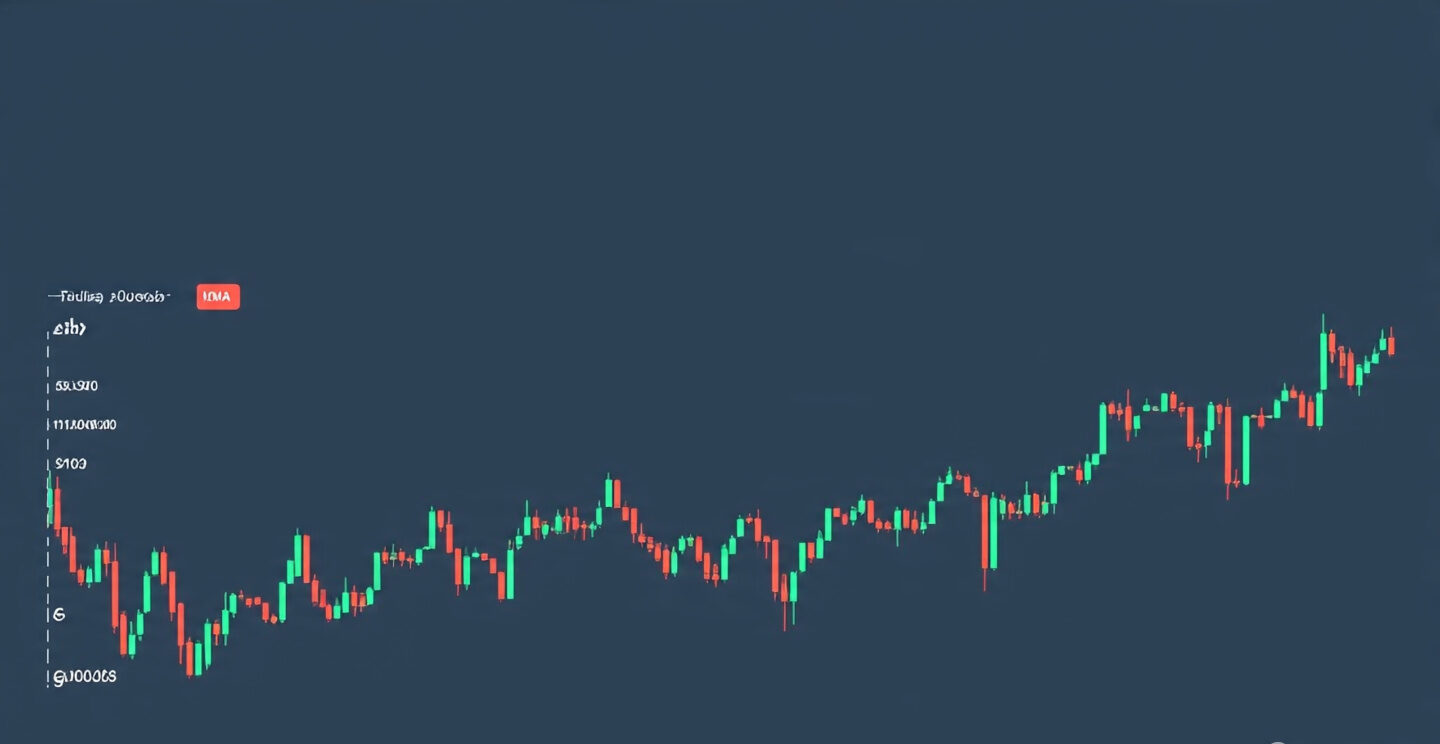The world of cryptocurrency trading has evolved dramatically, and mastering bitcoin technical analysis indicators has become essential for anyone serious about profitable trading. Whether you’re a seasoned trader or just starting your crypto journey, understanding these powerful analytical tools can make the difference between consistent profits and devastating losses. In this comprehensive guide, we’ll explore the most effective bitcoin technical analysis indicators that professional traders rely on daily. From moving averages to momentum oscillators, you’ll discover how to interpret market signals, identify entry and exit points, and develop a systematic approach to Bitcoin trading that removes emotion from your decision-making process.
Understanding the Foundation of Bitcoin Technical Analysis
Technical analysis forms the backbone of successful cryptocurrency trading strategies. Unlike fundamental analysis, which focuses on intrinsic value and market news, technical analysis examines price movements, volume patterns, and historical data to predict future market behavior.
Bitcoin’s unique characteristics as a digital asset make technical analysis particularly relevant. The cryptocurrency market operates 24/7, creating continuous price action and abundant data for analysis. This constant activity generates numerous trading opportunities for those who understand how to read the signals correctly.
Professional traders understand that bitcoin technical analysis indicators serve as a compass in the often turbulent crypto markets. These tools help identify trends, measure momentum, and signal potential reversal points. However, success requires more than just understanding individual indicators – it demands knowing how to combine them effectively and interpret their signals within the broader market context.
The key to successful Bitcoin trading lies in developing a systematic approach that incorporates multiple indicators while maintaining strict risk management principles. This methodology removes emotional decision-making and provides objective criteria for entering and exiting positions.
Essential Moving Averages for Bitcoin Trading
Moving averages represent one of the most fundamental and widely-used categories of bitcoin technical analysis indicators. These trend-following tools smooth out price action over specific periods, helping traders identify the underlying direction of Bitcoin’s price movement.
Simple Moving Average (SMA) Strategies
The Simple Moving Average calculates the average closing price over a predetermined number of periods. For Bitcoin trading, the most commonly used SMAs include the 20-day, 50-day, 100-day, and 200-day periods. Each timeframe serves different purposes in your analysis.
Short-term SMAs like the 20-day moving average react quickly to price changes, making them ideal for identifying immediate trend shifts. When Bitcoin’s price trades above the 20-day SMA, it typically indicates short-term bullish momentum. Conversely, price action below this level suggests bearish pressure.
Medium-term SMAs, particularly the 50-day moving average, provide insight into intermediate trends. Professional traders often watch for the “golden cross” pattern, where the 50-day SMA crosses above the 200-day SMA, signaling potential long-term bullish momentum.
Long-term SMAs like the 200-day moving average act as major support and resistance levels. Bitcoin’s relationship with this key level often determines whether the market is in a bull or bear phase. During bull markets, the 200-day SMA frequently provides support during pullbacks.
Exponential Moving Average (EMA) Applications

Exponential Moving Averages give more weight to recent price data, making them more responsive to current market conditions than SMAs. This characteristic makes EMAs particularly valuable for Bitcoin trading, where rapid price movements are common.
The 12-period and 26-period EMAs form the basis of the MACD indicator, while shorter EMAs like the 9-period and 21-period are excellent for identifying short-term trend changes. When Bitcoin’s price remains above rising EMAs, it confirms bullish momentum and suggests continuation of the uptrend.
EMA crossovers provide clear trading signals. When a faster EMA (like the 9-period) crosses above a slower EMA (like the 21-period), it generates a bullish signal. The opposite crossover indicates bearish momentum and potential selling opportunities.
Momentum Oscillators: RSI and Stochastic Analysis
Momentum oscillators are crucial bitcoin technical analysis indicators that measure the speed and strength of price movements. These tools help identify overbought and oversold conditions, providing valuable insights for timing entry and exit points.
Relative Strength Index (RSI) Mastery
The Relative Strength Index is perhaps the most popular momentum oscillator among Bitcoin traders. This indicator oscillates between 0 and 100, with readings above 70 typically indicating overbought conditions and readings below 30 suggesting oversold levels.
However, experienced traders understand that RSI divergence often provides more reliable signals than simple overbought/oversold readings. Bullish divergence occurs when Bitcoin makes lower lows while RSI makes higher lows, suggesting potential upward reversal. Bearish divergence presents the opposite pattern and warns of potential downward movement.
RSI also helps identify the strength of trends. During strong bull markets, RSI often remains above 40 even during corrections, while bear markets typically see RSI struggle to break above 60 during rebounds.
Stochastic Oscillator Insights
The Stochastic oscillator compares Bitcoin’s closing price to its price range over a specific period. This indicator consists of two lines: %K (fast stochastic) and %D (slow stochastic), with readings above 80 indicating overbought conditions and readings below 20 suggesting oversold levels.
Stochastic crossovers provide clear trading signals. When %K crosses above %D in oversold territory (below 20), it generates a bullish signal. Conversely, when %K crosses below %D in overbought territory (above 80), it suggests potential selling opportunities.
MACD: The King of Bitcoin Technical Analysis Indicators
The Moving Average Convergence Divergence (MACD) stands as one of the most versatile and reliable bitcoin technical analysis indicators available to traders. This powerful tool combines trend-following and momentum characteristics, making it invaluable for Bitcoin analysis.
MACD Components and Calculation
MACD consists of three components: the MACD line (12-period EMA minus 26-period EMA), the signal line (9-period EMA of the MACD line), and the histogram (difference between MACD line and signal line). Each component provides unique insights into Bitcoin’s price behavior.
The MACD line represents the difference between short-term and long-term momentum. When this line rises, it indicates strengthening bullish momentum. Conversely, a falling MACD line suggests weakening momentum or growing bearish pressure.
MACD Trading Strategies
MACD crossovers generate some of the most reliable trading signals in Bitcoin analysis. When the MACD line crosses above the signal line, it produces a bullish signal, suggesting potential buying opportunities. The opposite crossover indicates bearish momentum and possible selling points.
MACD divergence provides early warning signals for trend reversals. Bullish divergence occurs when Bitcoin makes lower lows while MACD makes higher lows, indicating potential upward reversal despite recent price weakness.
The MACD histogram offers additional insights into momentum changes. Growing histogram bars suggest accelerating momentum in the direction of the trend, while shrinking bars indicate weakening momentum and potential trend change.
Volume Analysis in Bitcoin Trading
Volume analysis represents a critical component of comprehensive bitcoin technical analysis indicators methodology. Trading volume provides insight into the conviction behind price movements and helps confirm the validity of trends and reversal patterns.
On-Balance Volume (OBV) Applications
On-Balance Volume accumulates volume based on price direction, creating a running total that helps identify buying and selling pressure. When Bitcoin’s price rises on increasing OBV, it confirms bullish momentum and suggests the trend will continue.
OBV divergence often precedes significant price movements. If Bitcoin makes new highs while OBV fails to confirm with new highs, it warns of potential trend weakness and possible reversal.
Volume Rate of Change (VROC)
Volume Rate of Change measures the percentage change in volume over a specified period. Increasing VROC during price advances confirms bullish momentum, while rising VROC during price declines suggests strong selling pressure.
Bollinger Bands and Volatility Analysis
Bollinger Bands consist of a middle band (typically a 20-period SMA) and two outer bands set at standard deviations above and below the middle band. These bands expand during periods of high volatility and contract during periods of low volatility.
Trading Bitcoin with Bollinger Bands
When Bitcoin’s price touches the upper Bollinger Band, it suggests the asset may be overbought and due for a pullback. Conversely, price action near the lower band indicates potential oversold conditions and possible bounce opportunities.
Bollinger Band squeezes occur when the bands contract significantly, indicating low volatility that often precedes major price movements. These periods represent excellent opportunities for breakout traders.
The middle band often acts as dynamic support or resistance. During uptrends, Bitcoin frequently finds support at the middle band, while during downtrends, this level often provides resistance.
Fibonacci Retracements in Bitcoin Analysis
Fibonacci retracements identify potential support and resistance levels based on mathematical ratios derived from the Fibonacci sequence. These levels often coincide with significant price reactions in Bitcoin trading.
The most important Fibonacci levels include 23.6%, 38.2%, 50%, 61.8%, and 78.6%. During bullish trends, these levels often provide support during corrections. In bearish trends, they frequently act as resistance during rebounds.
Fibonacci extensions help identify potential price targets beyond the original trend. The 127.2%, 161.8%, and 261.8% extension levels often coincide with significant highs or lows in Bitcoin’s price action.
Support and Resistance Level Analysis
Support and resistance levels represent fundamental concepts in bitcoin technical analysis indicators methodology. These levels represent areas where buying or selling interest historically concentrates, creating potential turning points for price action.
Identifying Key Levels
Horizontal support and resistance levels form at significant previous highs and lows. These levels become more significant when they’re tested multiple times, as they represent areas where market participants have shown strong reactions.
Dynamic support and resistance levels move with price action, typically following trend lines or moving averages. These levels adapt to changing market conditions and often provide more relevant guidance than static horizontal levels.
Psychological levels, particularly round numbers like $20,000, $30,000, or $50,000, often act as significant support or resistance areas. These levels attract attention from both retail and institutional traders, creating self-fulfilling prophecies.
Advanced Pattern Recognition
Chart patterns represent visual representations of market psychology and provide valuable insights into potential future price movements. These patterns form integral parts of comprehensive bitcoin technical analysis indicators strategies.
Reversal Patterns
Head and shoulders patterns indicate potential trend reversals, with the pattern’s neckline serving as a critical level. A break below the neckline in a head and shoulders top suggests bearish reversal, while a break above the neckline in an inverse head and shoulders indicates bullish reversal.
Double tops and bottoms provide clear reversal signals when confirmed by volume and other technical indicators. These patterns represent areas where buyers or sellers have twice failed to push price beyond specific levels.
Continuation Patterns
Triangular patterns, including ascending, descending, and symmetrical triangles, typically indicate trend continuation after a period of consolidation. The direction of the eventual breakout usually follows the direction of the preceding trend.
Flag and pennant patterns represent brief consolidations during strong trends, typically followed by continuation of the original price movement. These patterns offer excellent risk-to-reward opportunities for trend-following traders.
Risk Management with Technical Indicators
Successful Bitcoin trading requires comprehensive risk management strategies that incorporate bitcoin technical analysis indicators effectively. These strategies protect capital while maximizing profit potential.
Position Sizing Strategies
Technical indicators help determine appropriate position sizes based on market conditions and signal strength. Strong confluence among multiple indicators may justify larger position sizes, while weaker signals suggest smaller positions.
Stop-loss placement benefits significantly from technical analysis. Stops placed below significant support levels or above resistance areas often provide better risk-to-reward ratios than arbitrary percentage-based stops.
Confirmation Strategies
Using multiple bitcoin technical analysis indicators provides confirmation and reduces false signals. Successful traders typically require agreement among at least two or three different indicator types before entering positions.
Leading indicators like RSI and Stochastic help identify potential turning points, while lagging indicators like moving averages confirm trend direction. Combining both types creates more robust trading strategies.
Market Sentiment and Social Indicators
Modern Bitcoin analysis incorporates sentiment analysis and social media indicators alongside traditional technical tools. These alternative data sources provide additional context for technical signals.
Fear and Greed Index Applications
The Crypto Fear and Greed Index measures market sentiment on a scale from 0 (extreme fear) to 100 (extreme greed). Extreme readings often coincide with market turning points, providing contrarian trading opportunities.
Combining sentiment indicators with traditional bitcoin technical analysis indicators creates more comprehensive market analysis. Technical signals that align with extreme sentiment readings often produce stronger price movements.
Technology Integration and Automated Trading
Modern trading platforms integrate advanced technical analysis tools with automated trading capabilities. These systems can monitor multiple bitcoin technical analysis indicators simultaneously and execute trades based on predetermined criteria.
Algorithm Development
Creating effective trading algorithms requires thorough backtesting of indicator combinations and parameter optimization. Successful algorithms typically incorporate multiple timeframes and confirmation requirements.
Machine learning applications in technical analysis continue evolving, with AI systems capable of identifying complex patterns and relationships among various indicators.
Common Mistakes in Bitcoin Technical Analysis

Even experienced traders make mistakes when applying bitcoin technical analysis indicators. Understanding these common pitfalls helps improve trading results and avoid costly errors.
Over-reliance on Single Indicators
Depending too heavily on any single indicator increases the risk of false signals and poor trading decisions. Successful analysis requires confirmation from multiple sources and consideration of broader market context.
Ignoring Market Context
Technical indicators must be interpreted within the context of overall market conditions, news events, and fundamental factors. Blindly following indicator signals without considering external factors often leads to losses.
Parameter Optimization Pitfalls
Constantly adjusting indicator parameters to fit historical data (curve fitting) creates systems that work well in backtesting but fail in live trading. Successful traders use standard parameters and focus on consistent application.
Future of Bitcoin Technical Analysis
The evolution of bitcoin technical analysis indicators continues as markets mature and technology advances. New tools and methodologies constantly emerge to help traders navigate changing market conditions.
Blockchain Analytics Integration
On-chain analysis provides unique insights unavailable in traditional markets. Metrics like network activity, wallet concentrations, and transaction patterns complement traditional technical indicators.
Quantum Computing Implications
Advancing quantum computing technology may revolutionize technical analysis by enabling analysis of vastly more complex patterns and relationships among market variables.
Conclusion
Successfully implementing bitcoin technical analysis indicators requires dedication, practice, and continuous learning. The tools and strategies outlined in this comprehensive guide provide the foundation for developing profitable trading systems, but remember that no indicator guarantees success.
The key to long-term success lies in combining multiple indicators, maintaining strict risk management, and adapting your approach as market conditions evolve. Start with basic indicators like moving averages and RSI, then gradually incorporate more advanced tools as your experience grows.
Ready to transform your Bitcoin trading results? Begin implementing these bitcoin technical analysis indicators in your strategy today, starting with paper trading to build confidence before risking real capital. Remember, consistent profitability comes from disciplined application of proven techniques rather than searching for the perfect indicator.

